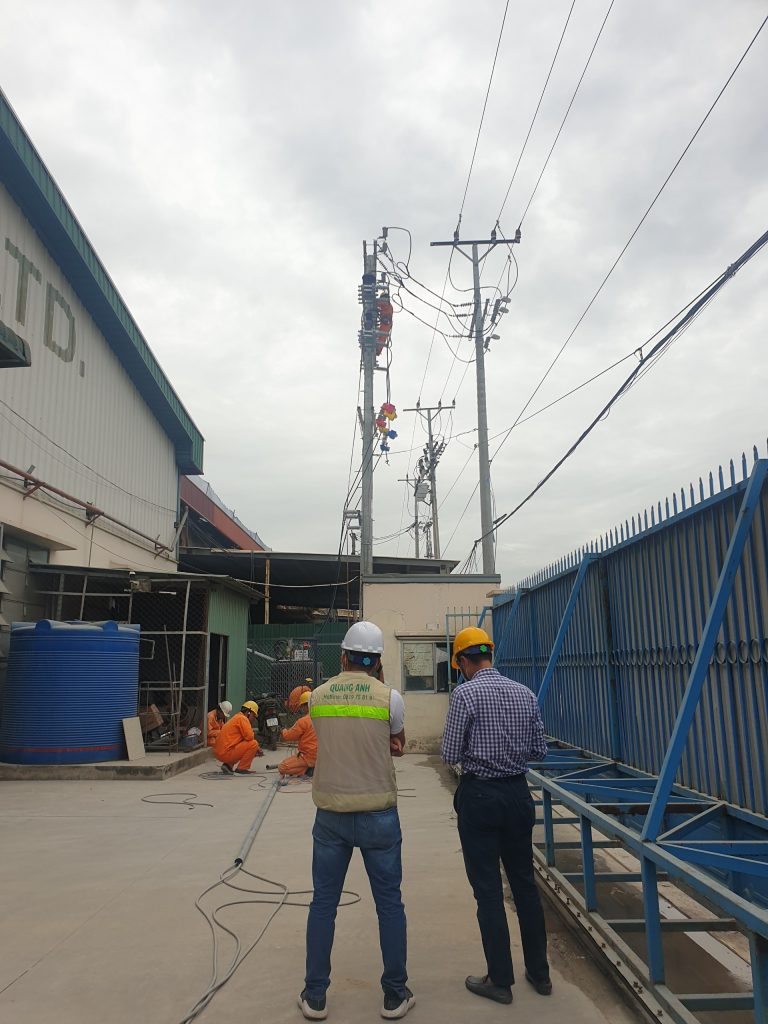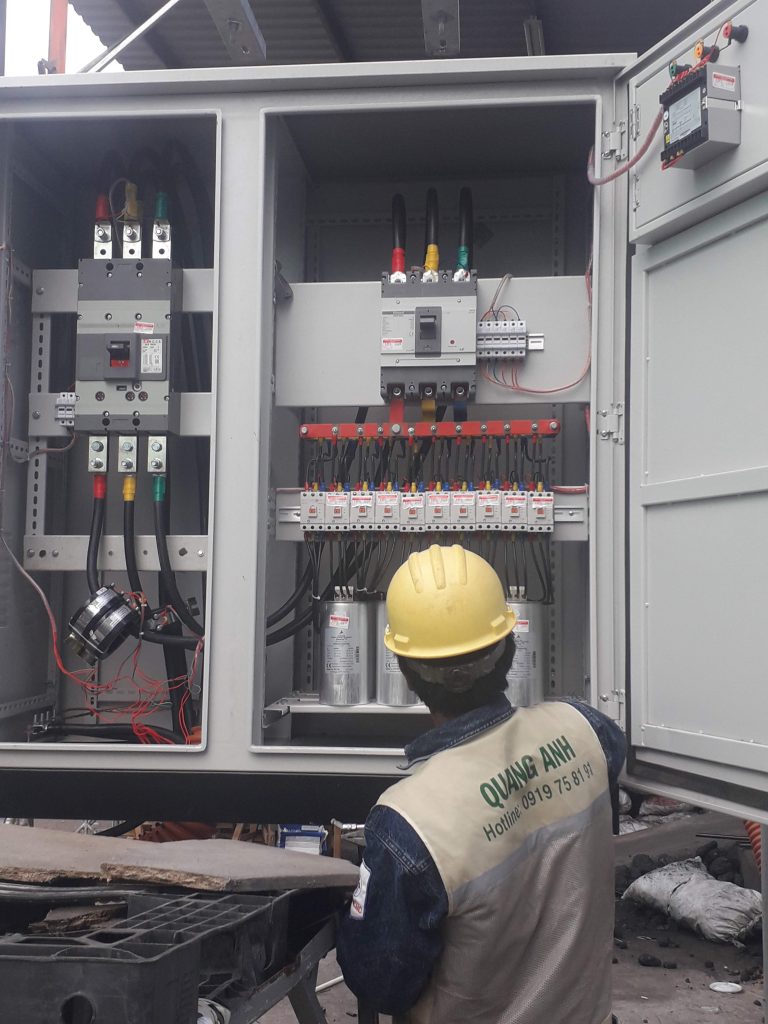Tin Tức
Substation Construction Quotation – Cost and Time Optimization
The quotation for the construction of a substation is a complex process that requires careful calculations and detailed planning of each item and necessary materials. Typically, contractors must prepare a detailed project estimate to help investors control costs and choose materials effectively.
Overview of Construction Quotations for Substations
The construction quotation for a substation requires detailed and meticulous calculations for each item, such as transformers, materials and equipment, construction costs, and material testing. Each item plays an important role in preparing a detailed project estimate.
Understanding Substation Construction
During the construction of a substation, many factors affect the construction quotation. The substation is the main structure that helps convert electricity with various voltage levels to serve residential and industrial needs. Substations are classified based on voltage, from ultra-high, high, medium, to low voltage.
Factors Determining Quotations
The quotation is not solely based on size or capacity but requires a comprehensive consideration of all aspects such as materials and substation design:
- Substation materials: The quality of materials such as transformers and electrical cabinets plays an important role. Selecting brands like ABB, Mitsubishi, Schneider ensures quality and significantly impacts prices.
- Installation location: Terrain and environmental conditions, along with the distance to the power supply, all affect construction costs.
- Substation design: The type (such as rack-mounted, steel column, or box station) and the size of the project greatly influence the total cost of execution.
Reference Quotation Table
| Capacity (kVA) | Rack Station Price (VND) | Steel Column Station Price (VND) | Box Station Price (VND) | |——————|———————|————————-|———————–| | 100 kVA | Around 260-290 million | Around 310-340 million | Around 490-530 million | | 160 kVA | Around 310-339 million | Around 350-380 million | Around 540-574 million | | 250 kVA | Around 350-376 million | Around 406-439 million | Around 590-628 million | | 320 kVA | Around 420-450 million | Around 456-495 million | Around 640-692 million | | 400 kVA | Around 445-468 million | Around 492-510 million | Around 680-725 million |
Regulations for Substation Installation
When usage exceeds 40 kW, customers should consider installing their own substation to maintain load balance and ensure that the power grid is not affected. This must strictly adhere to safety and technical regulations set by the relevant authority. Consultation from technical and electrical engineering experts is necessary to ensure safety and efficiency during substation construction.

Factors Affecting Construction Costs for Substations
Factors influencing substation construction quotations include capacity, construction location, material market, and labor. Each of these factors is variable and requires thorough consideration to optimize project costs.
When considering factors affecting substation construction costs, understanding and accurately assessing these factors is crucial to ensure project feasibility.
Project Scale
The scale of the substation is the main factor when considering construction costs. Larger substations with greater capacity require more resources, from materials to labor. This implies that initial investment may be higher, but the long-term advantage is improved operational efficiency.
Installation Location
The location of the substation greatly impacts construction costs. If located in difficult terrain, transportation and construction costs will be higher due to the need for additional resources to overcome geographical challenges. At the same time, accessing existing infrastructure can help reduce complexity during installation.
Geographical and Infrastructure Conditions
Areas with limited infrastructure or complex geography will directly impact the construction plan. Increased technology and manpower requirements lead to higher costs, requiring meticulous preparation from contractors.
Technology and Equipment
Choosing suitable technology and equipment not only affects quality but also impacts construction costs. Modern equipment from brands like ABB and Schneider may require large initial costs but offers high performance and long operational life, helping reduce future repair costs.
Labor Costs
Labor is a crucial part that determines the overall costs. Skilled workers not only require higher wages but also ensure quality and durability for the project. Ensuring enough quality manpower is an essential part of an optimal construction plan.
Permit and Legal Costs
Legal factors can also significantly affect costs. The permitting process and compliance with legal requirements need to be optimized to avoid disrupting the construction schedule, thus saving unnecessary costs.
Operational Losses
In addition to installation costs, consideration should be given to operational losses related to transformer efficiency. High efficiency saves energy, thereby minimizing long-term operational costs.
Choosing a Contractor
Choosing a capable and reputable contractor will ensure success and economic efficiency for the entire construction process. Experienced units will minimize the risk of incurring unnecessary costs.
Understanding and considering these factors will help optimize substation construction costs, ensuring the project is completed with the expected quality and performance.

Substation Construction Time and Costs
The construction time for a substation usually ranges from a few weeks to a few months, depending on the project’s scale. The time needed to complete a standard substation is about 60 days. The cost for this time also needs to be optimized during planning.
Substation construction plays an essential role in energy infrastructure, requiring a process with close coordination between different stages. Understanding construction time and installation costs is key for CEOs and technical leaders to accurately plan substation projects.
Substation Construction Time
Substation construction begins with a feasibility study, often taking 6 to 14 months, depending on the voltage level and the length of the power line. The project approval phase can take 9 to 12 months, depending on the project’s priority. Preliminary design is usually completed within about 6 months and then moves to the construction phase, lasting about 12 months. Thus, the total time from start to commissioning can be up to 36 months.
Substation Project Costs
The cost of constructing a substation is influenced by many factors such as substation capacity, installation location, and the type of equipment used. Particularly, the capacity of the transformer should be carefully considered based on the area’s consumption capacity and future load development.
Factors affecting substation construction costs include:
- Transformer capacity: Depending on consumption needs and load growth.
- Substation type: Choosing between pole-mounted, pad-mounted, enclosed, KIOSK, and mast stations depending on local conditions and budget.
- Equipment and materials: Using high-quality equipment from brands such as Schneider, ABB, LS to ensure project efficiency and longevity.
- Location and environmental conditions: Installation location must ensure safety and comply with environmental regulations.
Other Aspects
The consultation and design process requires the participation of experts to optimize substation design, ensuring a comprehensive economic-technical analysis. Once construction begins, close supervision is necessary to ensure project quality. Additionally, regular operation and maintenance are crucial factors that help maintain stability and extend equipment life.

Managing costs and time in substation construction requires professionalism and accurate calculations. Optimizing the influencing factors is the key to ensuring the project is implemented successfully and economically.
Contact QuangAnhcons – Hotline: 09 1975 8191 for detailed and optimal construction quotations for your project.
QuangAnhcons specializes in providing substation construction services, including cost estimation consultation, optimizing costs, and completion time. Ensure the highest quality and efficiency.